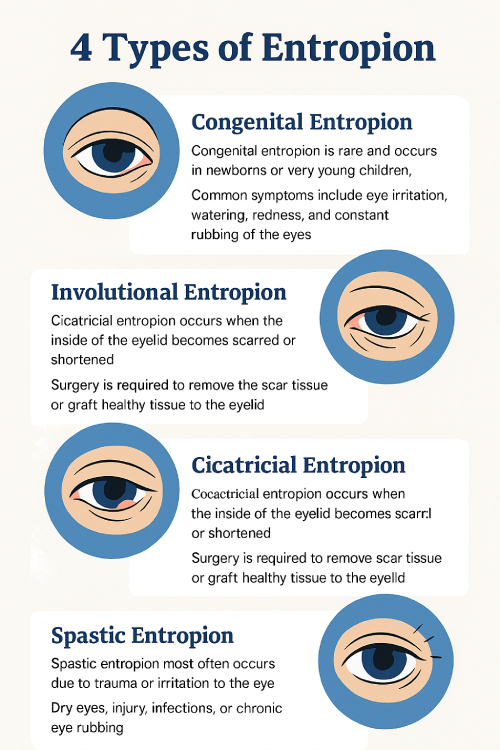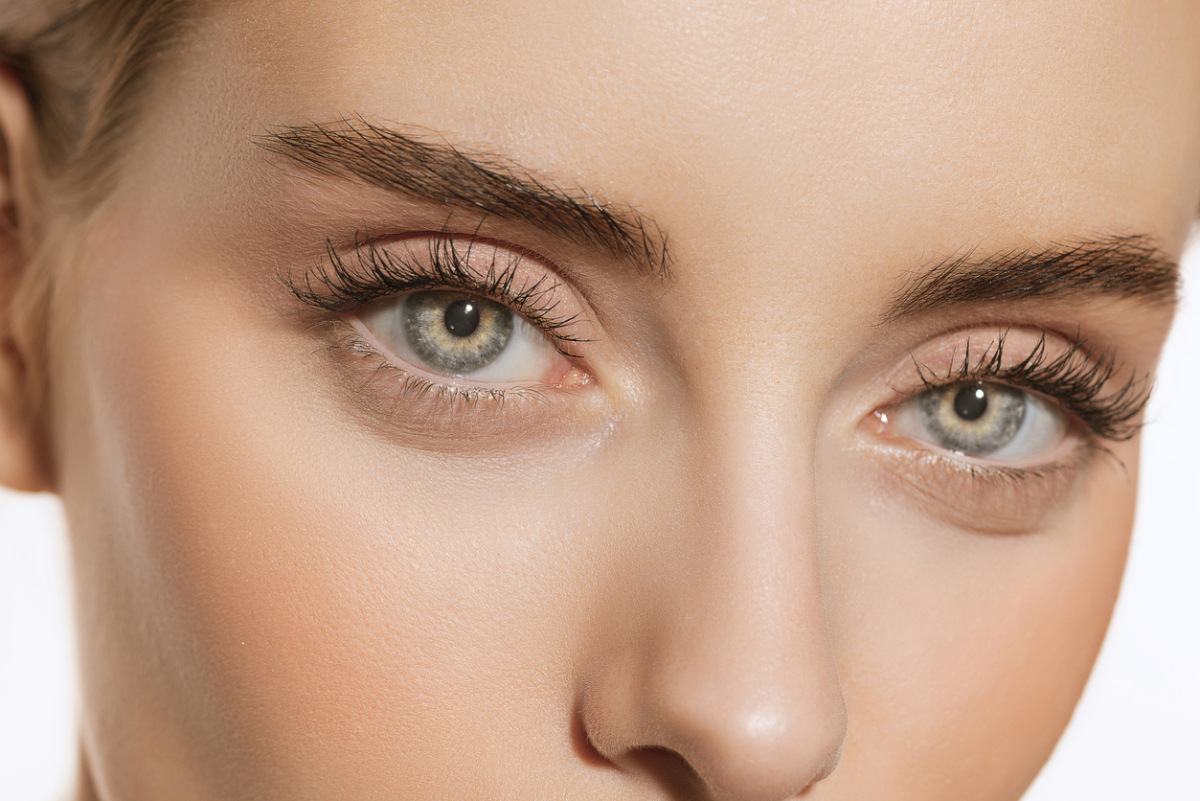Your eyes are one of the most important and delicate parts of your body. Even the smallest changes can impact your life. Various issues can impact the eyes and cause unwanted symptoms. Such issues include discomfort, vision problems, and, if left untreated, long-term damage. One condition that impacts the eyes and causes unwanted issues is entropion. It can cause your eyelashes and skin to turn inward, resulting in severe irritation. You may wonder, what are the four types of entropion? Below, you will find more information about the condition and the various types.
What Are the 4 Types of Entropion?
People with entropion may experience several unwanted symptoms, including redness, irritation, tearing, and a gritty sensation in the eye. Often, the condition starts as a mild annoyance. Without treatment, such as entropion repair, it can get significantly worse over time. This is why understanding the different types of entropion is helpful. Consider the following information about each type of entropion.
Congenital Entropion
Congenital entropion is rare and occurs in newborns or very young children. The condition typically affects the lower eyelids and is often caused by a developmental issue with the eyelid muscles. In some children, it can appear as though the eyelid rolls in only when they squeeze their eyes shut.
Common symptoms of congenital entropion include eye irritation, watering, redness, and constant rubbing of the eyes. In many cases, this type of entropion resolves on its own because the child’s eye muscles strengthen as they continue to grow. However, sometimes surgery is necessary. Surgery is performed when the condition causes damage to the child’s eye. Early intervention is crucial, so consult with an oculofacial surgeon about your child’s condition.
Involutional Entropion
This type of entropion is age-related and often affects older adults. It is the most common type of the condition. The natural aging process causes the muscles around the eyes to weaken. Additionally, the tissues that support the eyelid become loose, causing the lower eyelid to turn inward and touch the eye.
Symptoms associated with involutional entropion include tearing, watering, redness, and irritation of the eye. Many patients share that it feels like something is in their eye. This type of entropion initially tends to come and go in waves. At this stage, artificial tears may provide relief. Once the condition progresses, surgical intervention is often the best long-term solution. Eyelid tightening procedures performed by an oculofacial surgeon are effective and have a very fast recovery process.
Cicatricial Entropion
Cicatricial entropion occurs when the inside of the eyelid becomes scarred or shortened. The scarring pulls the eyelid inward and can impact the upper or lower eyelid. It is most commonly seen in people who have had an injury, infection, long-term inflammation, or a previous eye surgery.
This type of entropion requires surgical intervention. Surgery is needed to remove the scar tissue or graft healthy tissue to the eyelid. In many cases, cicatricial entropion is caused by an underlying condition. Surgery and treating the underlying condition are necessary to prevent the condition from happening again.
Spastic Entropion
Spastic entropion most often occurs due to trauma or irritation to the eye. It causes the muscles around the eye to spasm. When this happens, it can pull the eyelid inward. While this type of entropion can impact people of all ages, it is most common among older adults because it is associated with loose eyelids and underlying inflammation.
Dry eyes, injury, infections, or chronic eye rubbing commonly trigger the condition. The condition often improves once the underlying condition is treated. There are several effective treatment options depending on the cause, including warm compresses, lubricating eye drops, and muscle-relaxing injections. If the issue persists, surgery may be necessary to correct the eyelid’s position.

When To Contact an Oculofacial Surgeon
Many patients wonder at what point they should get help. If you experience any of the symptoms associated with entropion, you should seek treatment right away. Symptoms to look out for include your eyelashes rubbing against your eye, or if your eyelid turns inward or droops. Occasional eyelid irritation or redness is not a serious cause for concern. However, if the symptoms persist for more than a few days, it is best to consult an oculofacial surgeon.
Oculofacial surgeons specialize in eye health and facial plastic surgery. This means they are specially trained to diagnose and treat eye conditions. Entropion is a condition that is well within the field of oculofacial surgery. Once they diagnose the condition, they can provide a customized treatment plan based on your unique needs. This may include non-surgical or surgical treatment options. Their top priority is your long-term eye health.
Risks Associated with Untreated Entropion
Leaving entropion untreated can lead to serious complications. Constant friction from inward-turning lashes can cause long-term damage. Common complications include an increased risk of infection, corneal damage, and loss of vision. Early diagnosis and treatment reduce the long-term damage. It can also effectively improve symptoms. Your vision is extremely important to protect, so it is better to reach out for help sooner rather than later.
Schedule Your Appointment
If you experience any of the symptoms related to entropion, schedule an appointment right away. The initial consultation involves an assessment of your eyes. The oculofacial surgeon will also ask about your symptoms, their severity, and how long they have been present. Be prepared to describe the feelings in your eyes so that you can receive the most accurate diagnosis. In addition to an examination of the eyelids and a discussion about your symptoms, you may also need an eye exam. In some cases, additional testing is necessary to confirm your diagnosis.
Once the cause of the condition is determined, a customized treatment plan will be created for you. Mild cases may include eye drops, muscle-relaxing injections, or taping the lid. If those options are no longer effective, more aggressive treatment may be necessary. Advanced cases of entropion are most effectively treated with surgical intervention.
Top Oculofacial Surgeon
If you are concerned about your eye health, contact Dr. Nicole Langelier’s team today to schedule a consultation!

